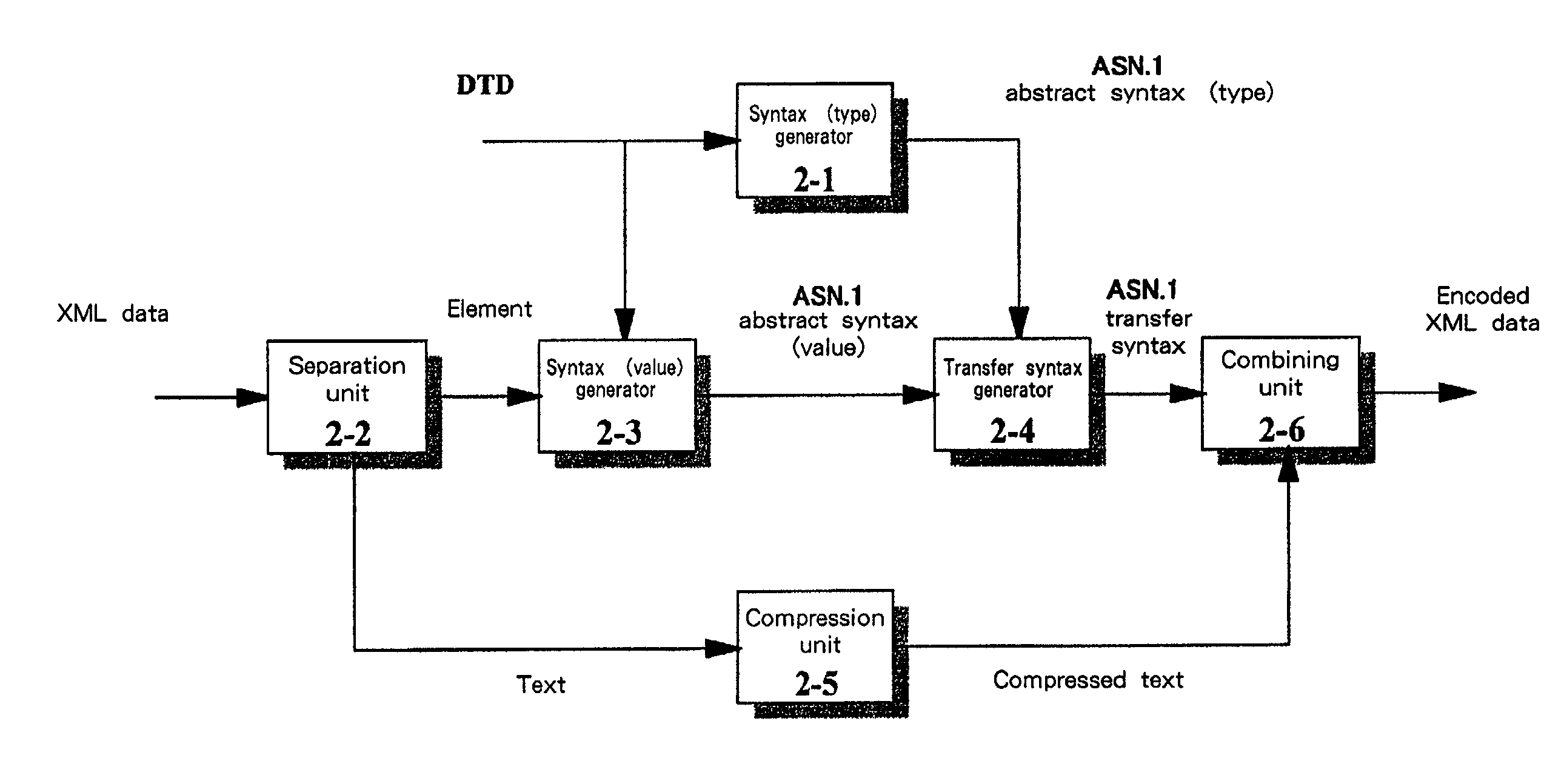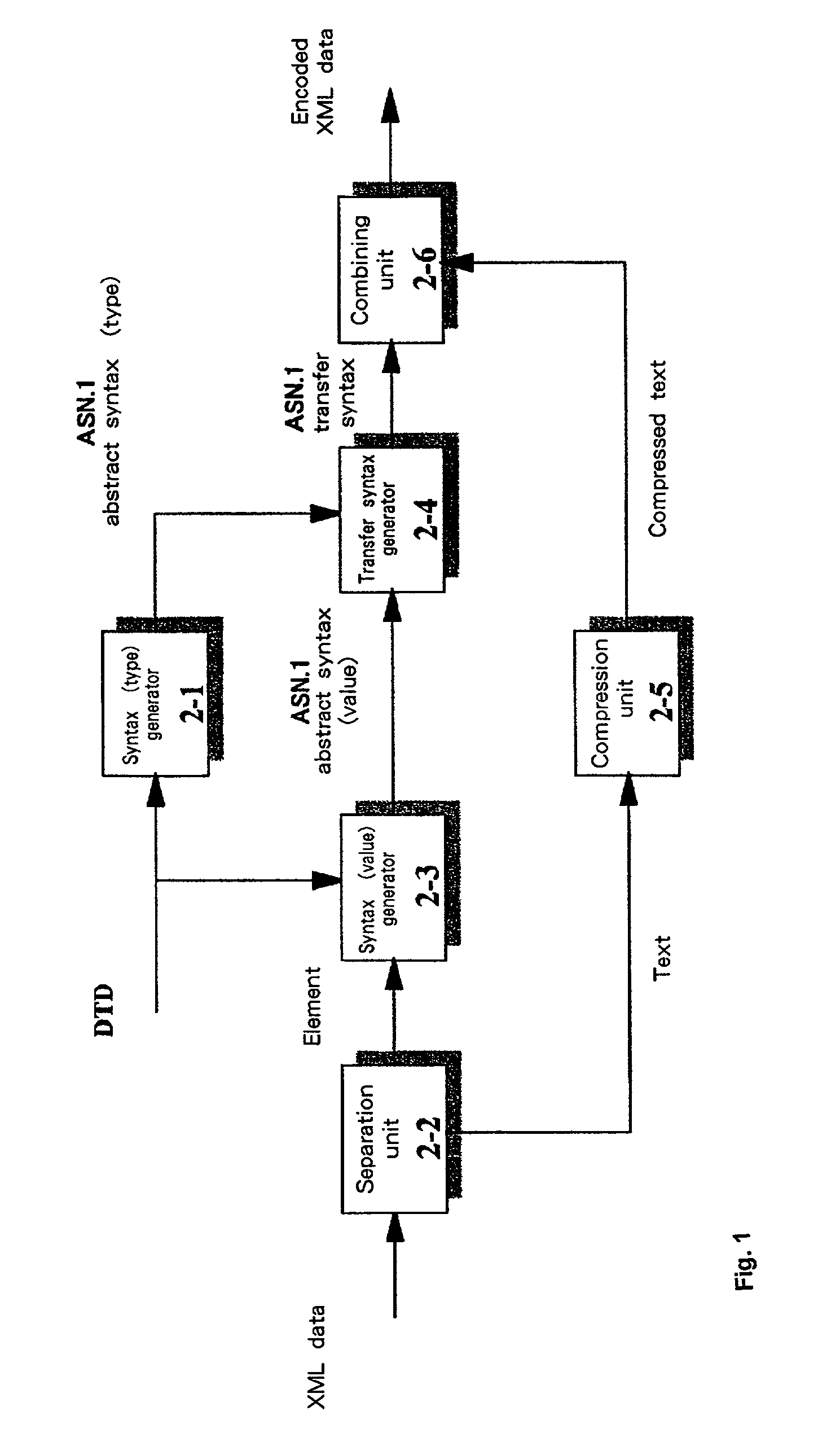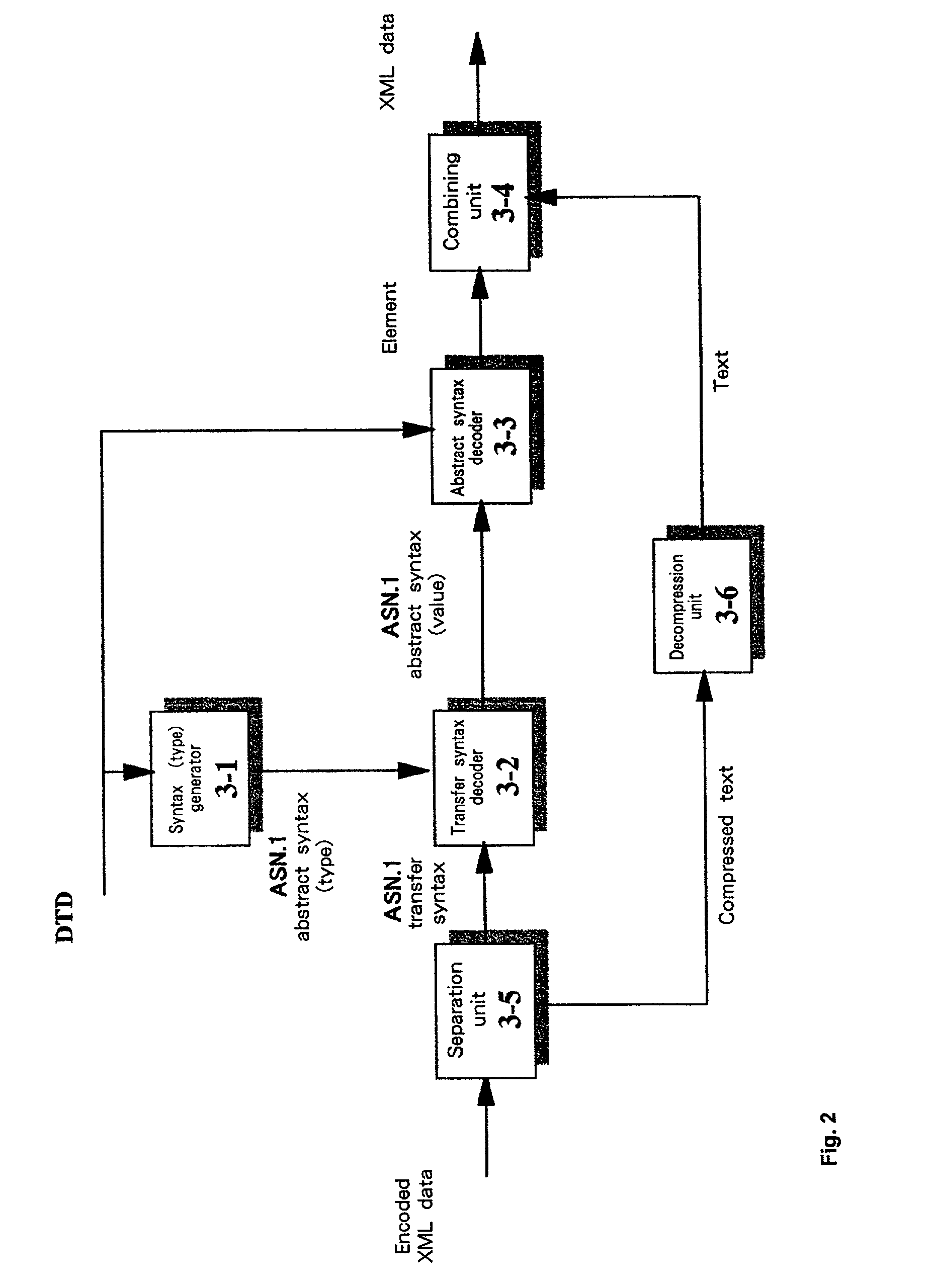XML data encoding and decoding
- Summary
- Abstract
- Description
- Claims
- Application Information
AI Technical Summary
Benefits of technology
Problems solved by technology
Method used
Image
Examples
first example embodiment
1. Premise Conditions
[0047]Before beginning an explanation of the first embodiment, premised conditions will now be described concerning the processing performed during the embodiment.[0048](1) The structure of XML data is defined by a grammar, which is designated for common use by a data encoding side and a decoding side. A grammar definition file, for example, is stored as external data at a predetermined IP address, and the IP address is used to refer to it when XML data is to be encoded or decoded. In this embodiment, DTD is used as the grammar definition, but this selection imposes no limitation on which grammar can be used, and XML Schema and RELAX, for example, can also be employed.[0049](2) XML data consists only of elements and text, another method is used to manage others (e.g., attributes and process instructions). For example, attributes and process instructions can be represented as special elements and can be embedded in the XML data, but in such a case, the grammar sh...
second example embodiment
[0272]In the first embodiment, an explanation was given in which the assumption was that the XML data was constituted merely by elements and text, and another method is used to manage others (e.g., an attribute and a process instruction). In the second embodiment, example processing for XML data that includes an attribute and a process instruction will be described. That is, a method will be explained whereby special elements are used to represent an attribute and a process instruction using special elements, and to embed them in the XML data. In this case, it is required the grammar is changed. It should be noted that, regardless of the example given in this embodiment, a method may also be employed whereby an attribute and a process instruction are separated from XML data and stored using an XPointer. The method used for embedding an attribute and a process instruction as special elements in the XML data can be understood as being a pre-process and a post-process for the processin...
PUM
 Login to View More
Login to View More Abstract
Description
Claims
Application Information
 Login to View More
Login to View More - R&D
- Intellectual Property
- Life Sciences
- Materials
- Tech Scout
- Unparalleled Data Quality
- Higher Quality Content
- 60% Fewer Hallucinations
Browse by: Latest US Patents, China's latest patents, Technical Efficacy Thesaurus, Application Domain, Technology Topic, Popular Technical Reports.
© 2025 PatSnap. All rights reserved.Legal|Privacy policy|Modern Slavery Act Transparency Statement|Sitemap|About US| Contact US: help@patsnap.com



